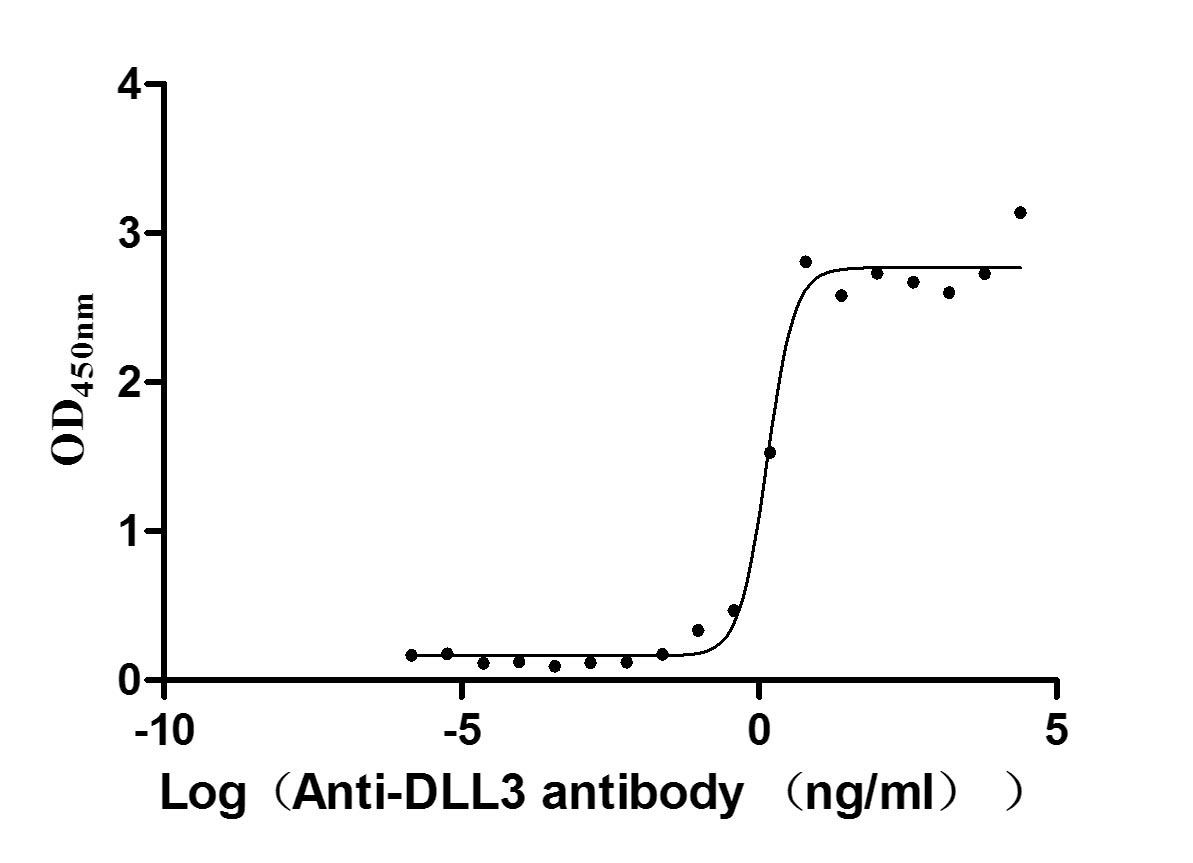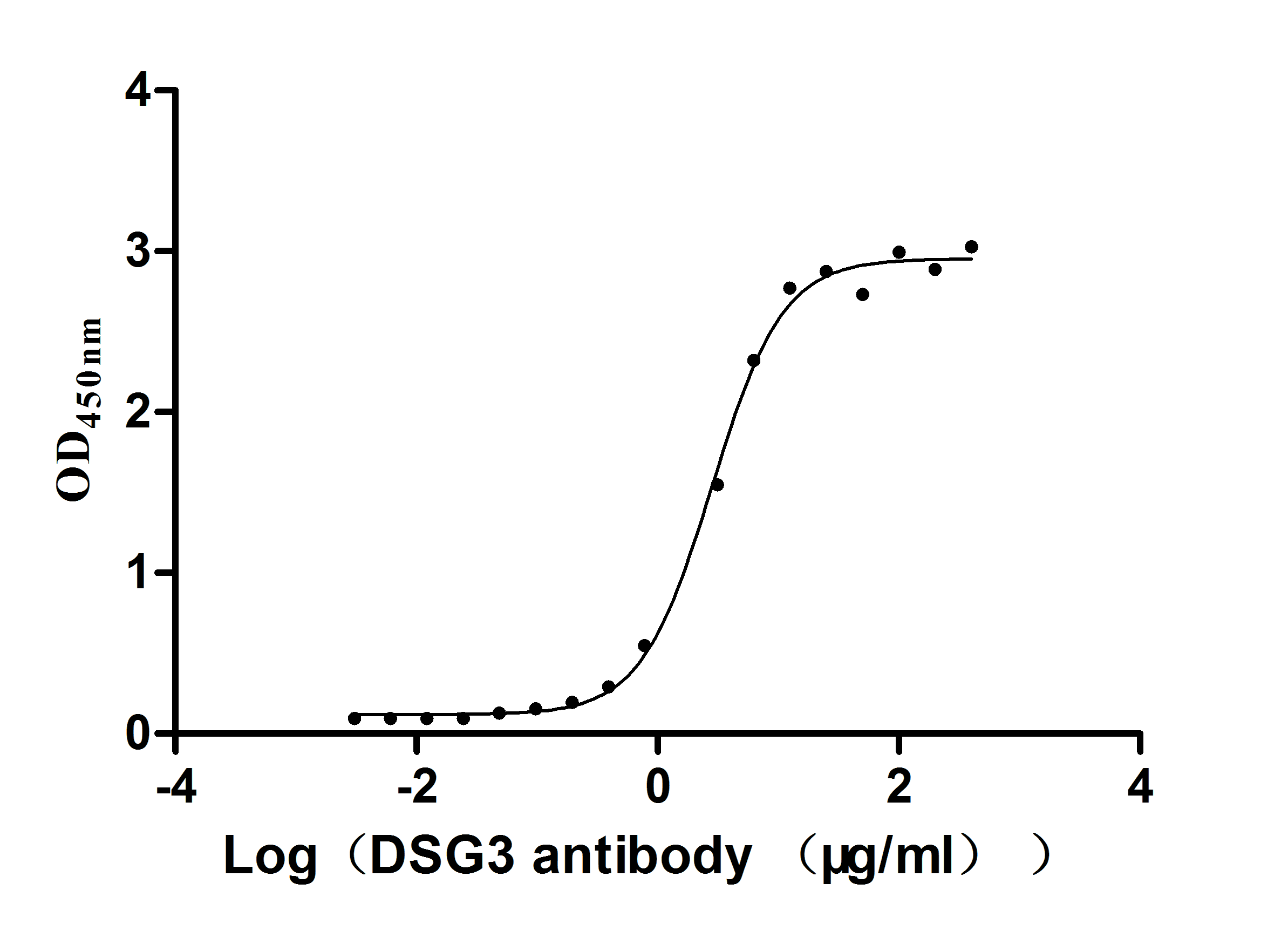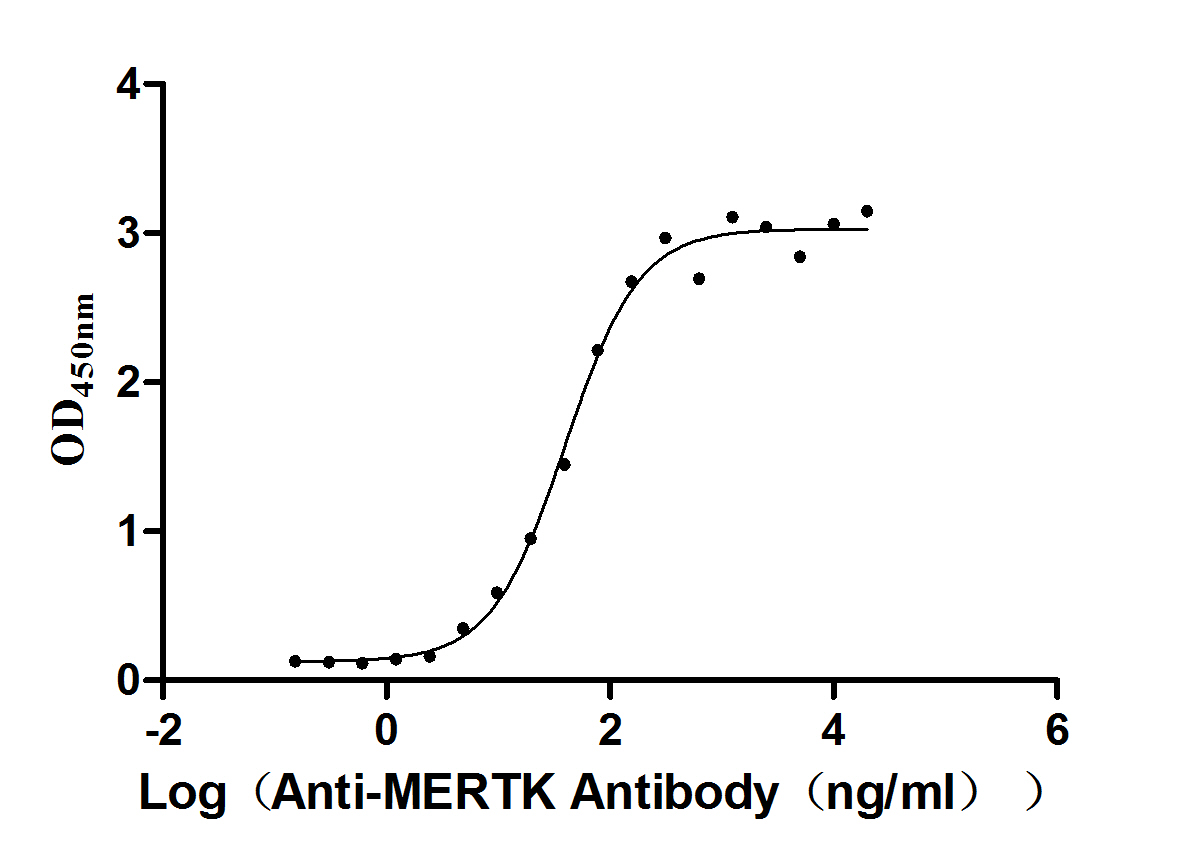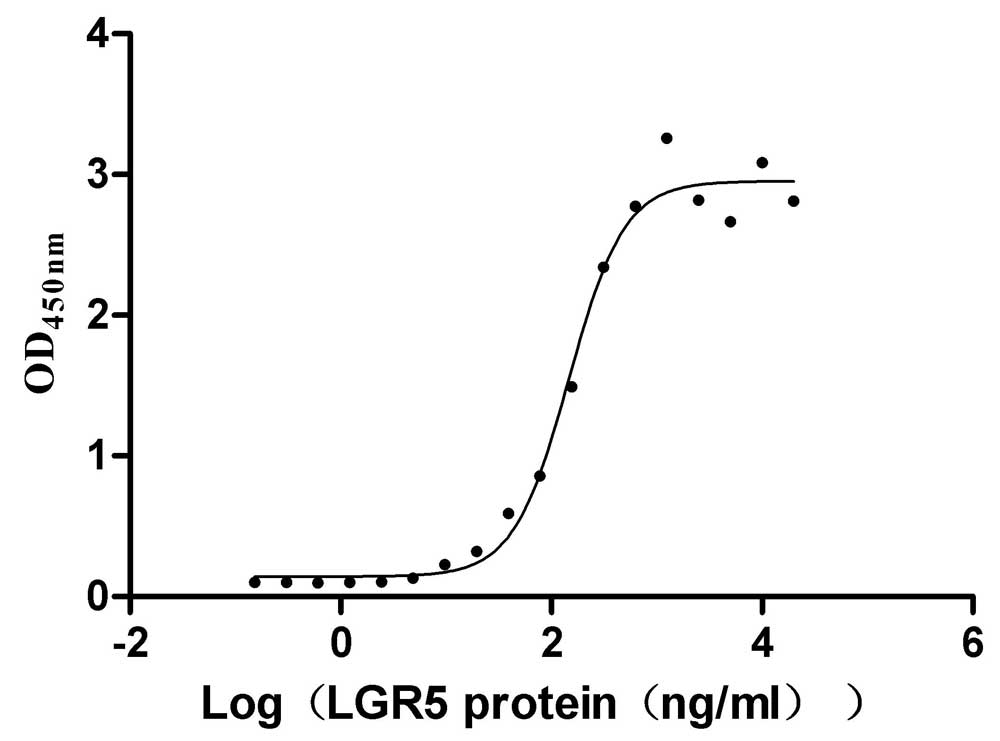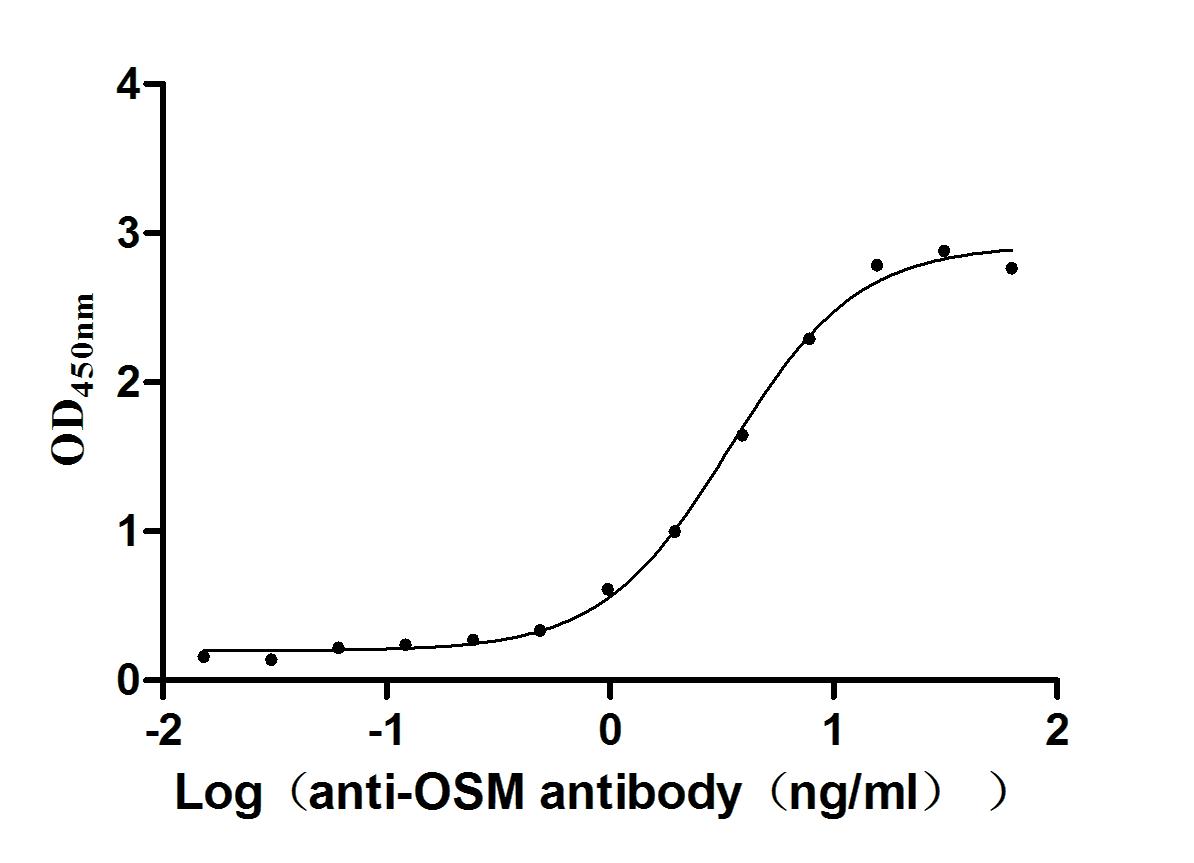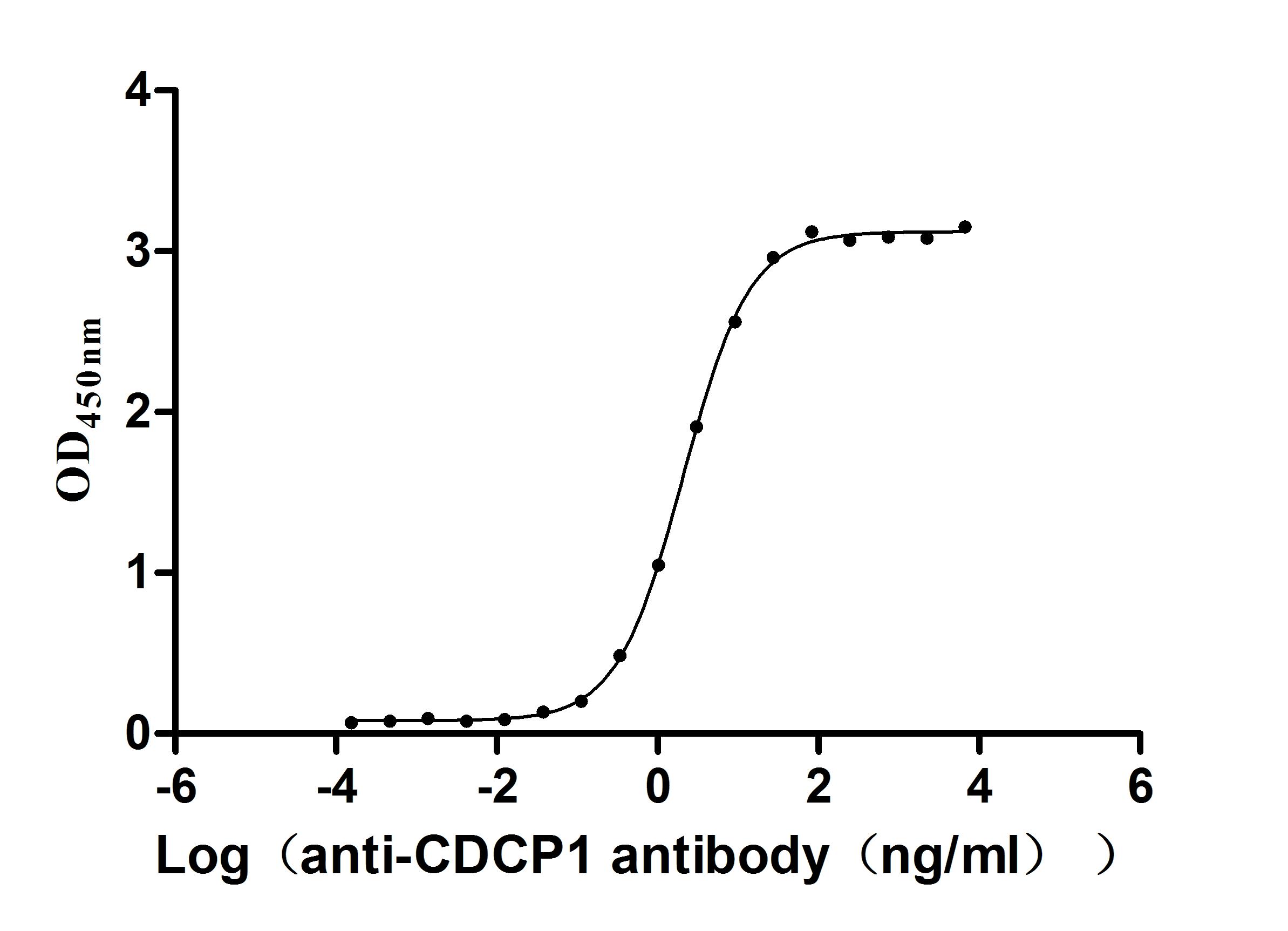Recombinant Human Protein-glutamine gamma-glutamyltransferase 5 (TGM5)
-
中文名稱(chēng):人TGM5重組蛋白
-
貨號(hào):CSB-YP023465HU
-
規(guī)格:
-
來(lái)源:Yeast
-
其他:
-
中文名稱(chēng):人TGM5重組蛋白
-
貨號(hào):CSB-EP023465HU
-
規(guī)格:
-
來(lái)源:E.coli
-
其他:
-
中文名稱(chēng):人TGM5重組蛋白
-
貨號(hào):CSB-EP023465HU-B
-
規(guī)格:
-
來(lái)源:E.coli
-
共軛:Avi-tag Biotinylated
E. coli biotin ligase (BirA) is highly specific in covalently attaching biotin to the 15 amino acid AviTag peptide. This recombinant protein was biotinylated in vivo by AviTag-BirA technology, which method is BriA catalyzes amide linkage between the biotin and the specific lysine of the AviTag.
-
其他:
-
中文名稱(chēng):人TGM5重組蛋白
-
貨號(hào):CSB-BP023465HU
-
規(guī)格:
-
來(lái)源:Baculovirus
-
其他:
-
中文名稱(chēng):人TGM5重組蛋白
-
貨號(hào):CSB-MP023465HU
-
規(guī)格:
-
來(lái)源:Mammalian cell
-
其他:
產(chǎn)品詳情
-
純度:>85% (SDS-PAGE)
-
基因名:TGM5
-
Uniprot No.:
-
別名:Protein glutamine gamma glutamyltransferase 5; Protein-glutamine gamma-glutamyltransferase 5; PSS2; TG(X); TGase 5; TGase X; TGase-5; TGase5; TGASEX; Tgm5; TGM5_HUMAN; TGM6; TGMX; TGX; Transglutaminase X; Transglutaminase-5
-
種屬:Homo sapiens (Human)
-
蛋白長(zhǎng)度:Full Length of Mature Protein
-
表達(dá)區(qū)域:2-720
-
氨基酸序列AQGLEVALT DLQSSRNNVR HHTEEITVDH LLVRRGQAFN LTLYFRNRSF QPGLDNIIFV VETGPLPDLA LGTRAVFSLA RHHSPSPWIA WLETNGATST EVSLCAPPTA AVGRYLLKIH IDSFQGSVTA YQLGEFILLF NPWCPEDAVY LDSEPQRQEY VMNDYGFIYQ GSKNWIRPCP WNYGQFEDKI IDICLKLLDK SLHFQTDPAT DCALRGSPVY VSRVVCAMIN SNDDNGVLNG NWSENYTDGA NPAEWTGSVA ILKQWNATGC QPVRYGQCWV FAAVMCTVMR CLGIPTRVIT NFDSGHDTDG NLIIDEYYDN TGRILGNKKK DTIWNFHVWN ECWMARKDLP PAYGGWQVLD ATPQEMSNGV YCCGPASVRA IKEGEVDLNY DTPFVFSMVN ADCMSWLVQG GKEQKLHQDT SSVGNFISTK SIQSDERDDI TENYKYEEGS LQERQVFLKA LQKLKARSFH GSQRGAELQP SRPTSLSQDS PRSLHTPSLR PSDVVQVSLK FKLLDPPNMG QDICFVLLAL NMSSQFKDLK VNLSAQSLLH DGSPLSPFWQ DTAFITLSPK EAKTYPCKIS YSQYSQYLST DKLIRISALG EEKSSPEKIL VNKIITLSYP SITINVLGAA VVNQPLSIQV IFSNPLSEQV EDCVLTVEGS GLFKKQQKVF LGVLKPQHQA SIILETVPFK SGQRQIQANM RSNKFKDIKG YRNVYVDFAL
-
蛋白標(biāo)簽:Tag?type?will?be?determined?during?the?manufacturing?process.
The tag type will be determined during production process. If you have specified tag type, please tell us and we will develop the specified tag preferentially. -
產(chǎn)品提供形式:Lyophilized powder
Note: We will preferentially ship the format that we have in stock, however, if you have any special requirement for the format, please remark your requirement when placing the order, we will prepare according to your demand. -
復(fù)溶:We recommend that this vial be briefly centrifuged prior to opening to bring the contents to the bottom. Please reconstitute protein in deionized sterile water to a concentration of 0.1-1.0 mg/mL.We recommend to add 5-50% of glycerol (final concentration) and aliquot for long-term storage at -20℃/-80℃. Our default final concentration of glycerol is 50%. Customers could use it as reference.
-
儲(chǔ)存條件:Store at -20°C/-80°C upon receipt, aliquoting is necessary for mutiple use. Avoid repeated freeze-thaw cycles.
-
保質(zhì)期:The shelf life is related to many factors, storage state, buffer ingredients, storage temperature and the stability of the protein itself.
Generally, the shelf life of liquid form is 6 months at -20°C/-80°C. The shelf life of lyophilized form is 12 months at -20°C/-80°C. -
貨期:Delivery time may differ from different purchasing way or location, please kindly consult your local distributors for specific delivery time.Note: All of our proteins are default shipped with normal blue ice packs, if you request to ship with dry ice, please communicate with us in advance and extra fees will be charged.
-
注意事項(xiàng):Repeated freezing and thawing is not recommended. Store working aliquots at 4°C for up to one week.
-
Datasheet :Please contact us to get it.
相關(guān)產(chǎn)品
靶點(diǎn)詳情
-
功能:Catalyzes the cross-linking of proteins and the conjugation of polyamines to proteins. Contributes to the formation of the cornified cell envelope of keratinocytes.
-
基因功能參考文獻(xiàn):
- Acral PSS (APSS) (OMIM 609796), typically non-inflammatory, is confined to distal extremities with localized exfoliation of the epidermis. It is caused by mutations in the TGM5 gene, encoding transglutaminase 5[3] or in the CTSA gene, encoding cystatin A and it is inherited in autosomal recessive pattern PMID: 25510201
- We report both European and non-European families with acral peeling skin syndrome carrying mutations in the TGM5 gene. In 5 patients, we found 3 novel mutations: c.1001+2_1001+3del, c.1171G>A and c.1498C>T. PMID: 25644735
- Data trebles the number of TMG5 mutations and provides further evidence that pCly113Cys is a founder mutation in the European population. PMID: 24628291
- Genetic variation in the epidermal transglutaminase genes is not associated with atopic dermatitis. PMID: 23189155
- TGM5 mutations impact epidermal differentiation in acral peeling skin syndrome. PMID: 22622422
- analysis of a recurrent mutation in the TGM5 gene in European patients with acral peeling skin syndrome PMID: 22036214
- Acral peeling skin syndrome with TGM5 gene mutations may resemble epidermolysis bullosa simplex in young individuals. PMID: 20164844
- transglutaminase 5 contributes, as a secondary effect, to the hyperkeratotic phenotype in ichthyosis (both vulgaris and lamellar) and in psoriasis. PMID: 12230511
- Results demonstrate that transglutaminase 5 is able to induce cell death when intracellularly overexpressed. PMID: 15290346
- Data show that transglutaminase (TGase) 5 is acetylated at the N-terminal end, is active upon treatment with phorbol acetate, and co-localises with vimentin intermediate filaments. PMID: 15290349
- Transglutaminase 5 is expressed during hair follicle homeostasis. PMID: 16117804
- A homozygous missense mutation in TGM5 abolishes epidermal TGM5 activity and causes acral peeling skin syndrome. PMID: 16380904
- TG5 full-length enzyme has very low enzymatic activity, while the 53-kDa proteolytically processed form is highly active. PMID: 18509357
- A missense mutation in TGM5 causes acral peeling skin syndrome in a Tunisian family. PMID: 19440220
顯示更多
收起更多
-
相關(guān)疾病:Peeling skin syndrome 2 (PSS2)
-
亞細(xì)胞定位:Cytoplasm. Note=Associated with intermediate filaments.
-
蛋白家族:Transglutaminase superfamily, Transglutaminase family
-
組織特異性:Expressed in foreskin keratinocytes.
-
數(shù)據(jù)庫(kù)鏈接:
Most popular with customers
-
Recombinant Human T-cell antigen CD7 (CD7), partial (Active)
Express system: Mammalian cell
Species: Homo sapiens (Human)
-
Recombinant Human Glypican-3 (GPC3) (G537R), partial (Active)
Express system: Mammalian cell
Species: Homo sapiens (Human)
-
Recombinant Human Delta-like protein 3 (DLL3), partial (Active)
Express system: Mammalian cell
Species: Homo sapiens (Human)
-
Recombinant Mouse Desmoglein-3 (Dsg3), partial (Active)
Express system: Mammalian cell
Species: Mus musculus (Mouse)
-
Recombinant Human Tyrosine-protein kinase Mer (MERTK), partial (Active)
Express system: Mammalian cell
Species: Homo sapiens (Human)
-
Recombinant Human R-spondin-1 (RSPO1), partial (Active)
Express system: Mammalian cell
Species: Homo sapiens (Human)
-
Recombinant Human Oncostatin-M (OSM), partial (Active)
Express system: Mammalian cell
Species: Homo sapiens (Human)
-
Recombinant Macaca fascicularis CUB domain containing protein 1 (CDCP1), partial (Active)
Express system: Mammalian cell
Species: Macaca fascicularis (Crab-eating macaque) (Cynomolgus monkey)



-AC1.jpg)
